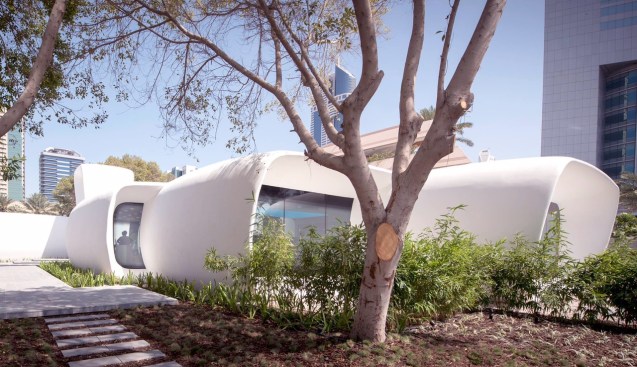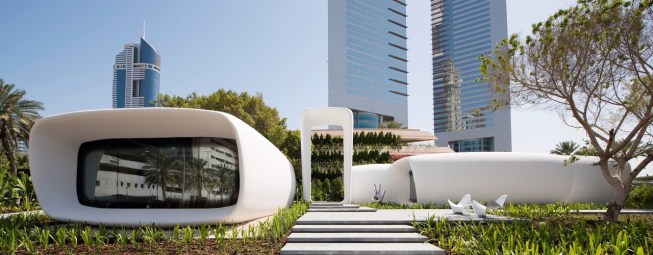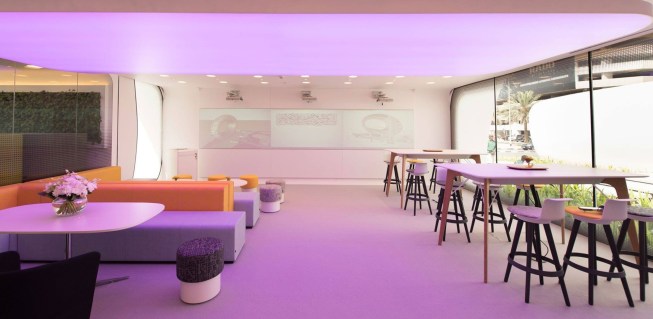
WAM
The world’s first 3D-printed office building complex is open for business. The approximately 2,600-square-foot, single-story, multi-building campus was designed by Gensler for the United Arab Emirates National Committee as the headquarters for the Dubai Future Foundation (DFF). Each building is made up of multiple concrete components, which were fabricated using a 20-foot-tall by 120-foot-long by 20-foot-wide 3D printer from WinSun Global, in Shanghai, and then shipped to Dubai and assembled. The use of 3D-printing fabrication technology, plus the subsequent assembly process, the firm says, cut labor costs by 50 to 80 percent and overall construction waste by 30 to 60 percent. The building was inaugurated last week and opened yesterday.
“This paves the way for a future where 3D printing can help resolve pressing environmental and urbanization issues, and it allows us to deliver highly customized spaces for our clients in a much shorter time frame,” Gensler principal Richard Hammond said in a statement. Gensler worked with structural engineering firm Thornton Tomasetti and mechanical engineering firm Syska Hennessy to realize the design.

WAM
The DFF headquarters adds to the growing list of structures that demonstrate 3D printing’s utility beyond prototyping and model-making. Last year, WinSun debuted a five-story apartment block and a nearly 12,000-square-foot residence, both 3D printed, in China’s Suzhou Industrial Park in the eastern province of Jiangsu. And this past fall, Skidmore, Owings & Merrill collaborated with the U.S. Department of Energy’s Oak Ridge National Laboratory, in Tennessee, to create a 3D-printed enclosure and companion vehicle that share renewable power to stay off grid during peak-demand periods.
Meanwhile, researchers in commercial and institutional settings alike are exploring new fabrication methods that could allow 3D printing to more readily scale. ARCHITECT contributor Blaine Brownell recently highlighted research from Siemens’ Corporate Technology division around the development of a crew of spider-like robots that work together to build by extruding PLA plastic.
At least in the near term, however, it’s likely that 3D printing’s biggest impact on the built space will continue to be in the details. That includes highly customizable joints, durable and eco-friendly alternatives to concrete block, wall cores, and even (albeit at a larger scale) load-bearing footbridges—all of which bring 3D printing to the core of a project’s construction.

WAM

WAM